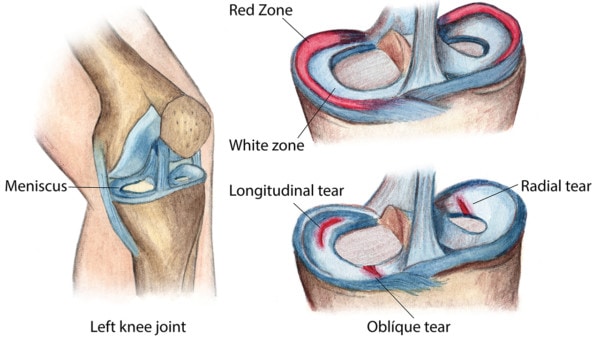Meniscus Surgery in Young Patients

Giana Pundek Tenius/Shutterstock
A recently published article on surgical repair of “red-white” zone tears in the knee meniscus gives some insight into the “best case” healing of a certain type of red/white zone knee meniscus tear with surgery. To understand what that means, some basic knee meniscus tear anatomy review is needed. The knee meniscus has a “red” zone which is the outer 1/3 of the meniscus which has a good blood supply. The inner 2/3’rds of the knee meniscus has no blood supply, hence the name “white zone”. Meniscus tears in the red zone have the potential to heal, since there’s a good blood supply, while tears in the white zone rarely heal for the opposite reason. The “red-white zone” is the area between the two, where a tear may or may not heal. What’s unique about this research study was that these meniscus tears were in very young patients, with an average age of 16.8 years. These were basically the best healing bunch of patients you could imagine. Despite this being a group of great natural healers, only about 6 in 10 of the tears were still healed at 10 plus years after the knee surgery. About 4 in 10 weren’t healed. 21% of the tears ultimately required the surgeon to go back in for a second arthroscopic knee surgery and take out a portion of the knee meniscus. Even at the young average age of 26, already 6% of the patients were showing signs of knee arthritis (likely from removing parts of the meniscus). On the positive side, when the knee meniscus healed, there was no evidence of knee arthritis on MRI. However, this is a bit of a “take it with a grain of salt” finding, as the kids were in their mid-twenties at this juncture. We generally see the early appearance of arthritis in this group (based on our clinical experience) about 10 years farther on, when kids who have had early knee surgeries are in their thirties. The upshot? Based on this one small study of 33 young patients with no control group (patients who didn’t get surgery), at best (I say that because these were very young patients) there’s about a 60/40 chance that a repaired red-white zone tear will be healed when you look 10 years later.
What does that mean for the middle aged, weekend warrior? Well since your ability to heal has taken a hit since you were 16 (remember how quickly you used to recover?), count on much less than a 60% chance that your knee meniscus tear will heal with surgery.

NOTE: This blog post provides general information to help the reader better understand regenerative medicine, musculoskeletal health, and related subjects. All content provided in this blog, website, or any linked materials, including text, graphics, images, patient profiles, outcomes, and information, are not intended and should not be considered or used as a substitute for medical advice, diagnosis, or treatment. Please always consult with a professional and certified healthcare provider to discuss if a treatment is right for you.
